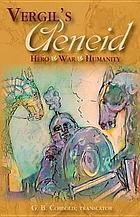 King of the Wood: The Sacrificial Victor in Virgil's Aeneid
by
Julia T. Dyson
King of the Wood: The Sacrificial Victor in Virgil's Aeneid
by
Julia T. Dyson
 The Art of Vergil; Image and Symbol in the Aeneid.
by
Viktor Pöschl
The Art of Vergil; Image and Symbol in the Aeneid.
by
Viktor Pöschl
 Structural Patterns and Proportions in Vergil's Aeneid, a Study in Mathematical Composition
by
George E. Duckworth
Structural Patterns and Proportions in Vergil's Aeneid, a Study in Mathematical Composition
by
George E. Duckworth
 Vergil's Aeneid
by
Virgil; G. B. Cobbold
Vergil's Aeneid
by
Virgil; G. B. Cobbold
